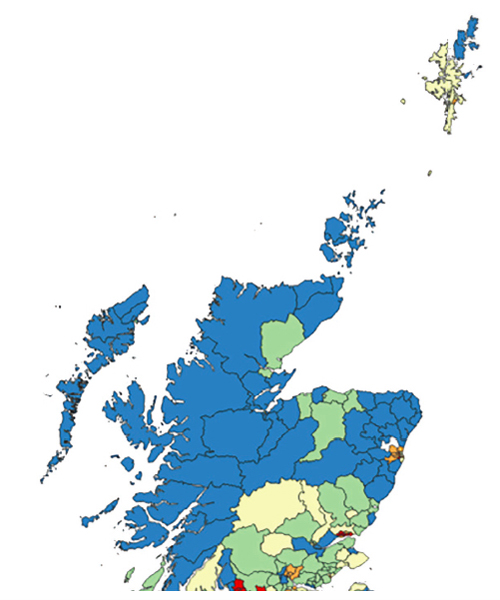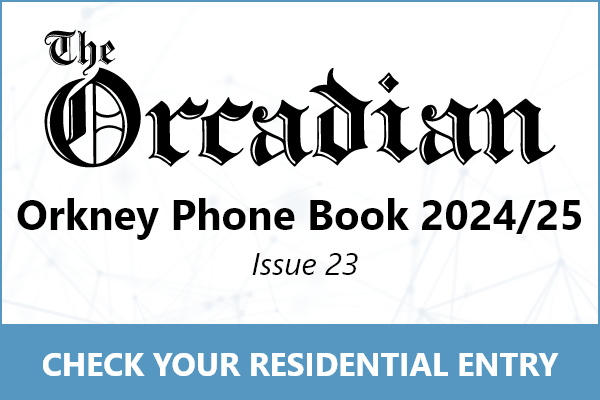COVID-19 index places Orkney at lowest risk of transmission

An interactive map of Scotland, showing the risk of coronavirus transmission, has placed Orkney among the areas in the country at the lowest risk.
The report shows significant differences between Scottish communities and the team behind it say that their research suggests that a phased, geographic easing of lockdown should be considered by the Scottish Government.
The organisation has produced a colour-coded map based on council constituencies — freely accessible online.
Researchers say that the COVID-19 Community Risks Index is the most detailed possible picture of which Scottish communities are most under threat.
The research calculates each area’s risk of exposure according to two factors — transmission probability and potential for fatalities.
The data used in those calculations include population density; how many older people or those with underlying health conditions live in the area; how many people use road and rail travel; how easy or otherwise it is to access local health services; socio-economic factors, such as the average income of residents in each area.
Orkney’s decreased levels of connectivity and the geographically spread-out local population also accounts for its low rating.
Currently the research does not factor in actual infection rates or fatalities which may have been recorded in each area as these figures are not yet publicly available in sufficiently detailed format.
Gordon MacIntyre-Kemp, founding director of Scotianomics in Glasgow, said: “We want to be absolutely clear. This is nothing to do with the number of cases in an area or how well people living in each area have observed the lockdown. It is not a map of COVID-19 cases across Scotland but of the areas most at risk of community infection.
“However, what it sets out very clearly is that the risks of transmission and the likelihood of fatalities within particular communities can be predicted with a high degree of confidence.
“For example, our findings suggested that Inverclyde was the most at risk community in Scotland, taking up the top six spots on the index. That has been borne out by the actual impact of COVID-19 in the area.
“This clearly demonstrates the scope to consider issues such as schools reopening on Orkney to a different timescale to Greenock. We already have a weather warning system with yellow, amber or red alerts which are adapted to different parts of Scotland.
“Likewise, schools have different holidays in different council areas, all of which suggest that a phased reopening of Scotland, and indeed the rest of the UK, would not be that complex.
“It is our hope that this kind of fact-based, data-driven research will help shape the Scottish Government’s plans to get the best possible outcomes for both public health and the economy, by lifting lockdown according to the very different risks in different areas.”
Mr MacIntyre-Kemp says their research suggests that this regionalised approach to easing restrictions is the most likely way to prevent a second wave of infection and protect the country’s economy, pointing to other countries such as China, Italy and Germany.
Scotianomics has pledged that it will update the online tracker as new datasets become available.
The COVID-19 Risk Monitor can be viewed online at https://www.scotianomics.org/


